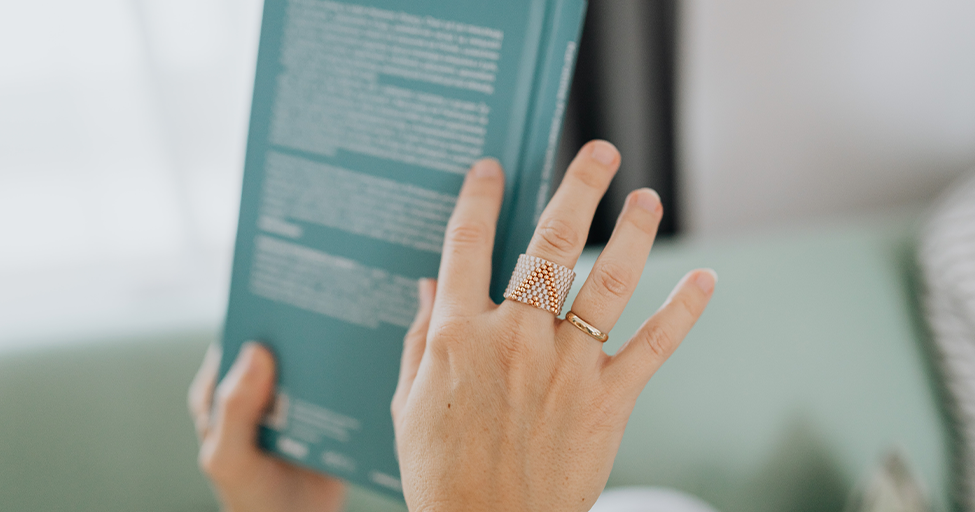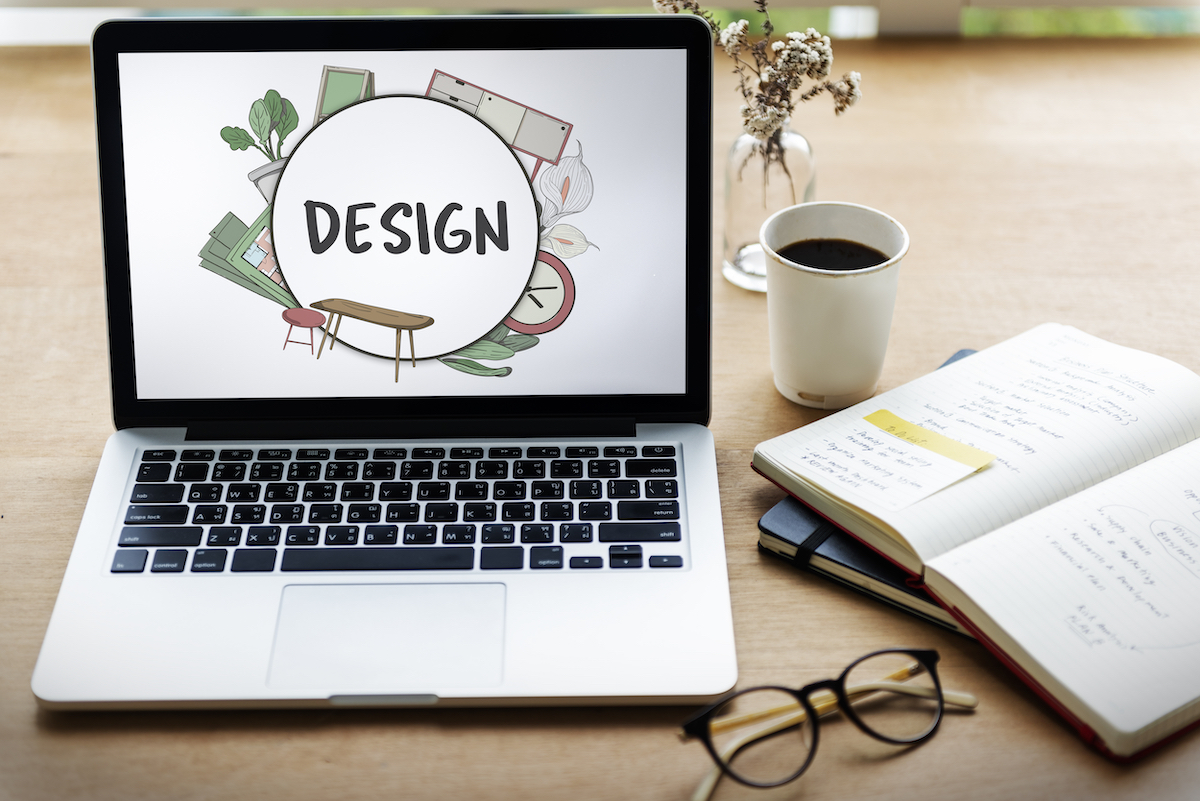
How to Design a Book Cover
March 23, 2022
How to Design a Back Book Cover
April 20, 2022How to Design a Book Spine
Take a look at your home bookshelf. What do you see? That’s right: the spine of every book!
Even though the spine is one of the smallest physical parts of a book, it’s often the first thing a potential reader sees. So when you’ve finished writing your masterpiece, spend some time learning how to design your book spine!
Information to include on a book spine
You need an eye-catching spine design to attract potential readers. Although it’s small compared to the rest of any publication, the spine is one of the most important physical parts of a book.
What are the physical parts of a book?
Before you start on your book cover design, it’s helpful to understand the different physical parts of your book. As an author and a reader, you already know about the table of contents, chapters, and acknowledgments that you wrote. However, the book’s anatomy goes beyond those components. Here are a few terms to familiarize yourself with:
- Text block. The physical pages of the book which are glued into the cover.
- Cover board. A stiff board, usually cardboard, that encases a hardcover book. Cover boards are often wrapped in a dust jacket with the book cover design printed on it.
- Flyleaf. A piece of paper inserted between the cover and the printed pages.
Another physical part of a book, of course, is the spine. And although it’s a small physical part of your book, it’s an important one—and you have to include the best information on it.
What type of information is typically included on a book spine?
The book spine generally includes the book’s title, the author’s name—or at least last name—and the publisher. Your book spine design depends on two main factors: whether you’ve printed a hardcover book or a paperback, and your book’s length.
Hardcover book spines are larger than paperbacks due to the binding process. So you can include more information, imagery, or a larger font on your hardcover copies. And since the spine width is determined by the number of pages in your book, books with more pages have a bigger spine size.
What factors should you consider when deciding what information to include on a book spine?
There are a few factors to consider when laying out your spine design. Your publisher or printing company might require that their name or logo is prominently displayed on the spine. And depending on the length of your title, author name, and spine size, you might have to just use your last name or very small spine text.
One more factor to consider is your book spine design budget. If you’re hiring a professional designer, your cost will vary depending on the spine design’s simplicity or complexity. One of the best ways to create a great book spine at low cost is to only use the key elements of an eye-catching book spine.
Elements of an eye-catching book spine
Remember: your book spine is often the first thing that a potential reader will see on a bookstore or library shelf. So your book spine design needs to be eye-catching and informative. And although you only have a little bit of space to work with, you can use your book spine to make a great first impression. The best way to begin your book spine design is to understand the best practices and check out some good examples.
What are some best practices for book spine design?
If you’re working with a traditional publishing company, chances are they have a graphic designer on their staff who can create your entire book cover design—including the spine. However, if you’re self-publishing, you have to understand some best practices for spine design. Here are a few tips:
- Your book spine should be a continuation of the front and back cover. So if you’re using an image or a gradient, carry that through to your spine instead of making the spine a different color.
- Most online and self-publishing companies will provide you with a book cover template that includes spine size. Follow the template exactly so your spine text fits in the allotted space.
- Include your book title, author name, and (if applicable) the publisher on the spine. Don’t go overboard on the spine text since you don’t have much room to work with.
- Use an easy-to-read font so your readers can quickly identify which book is yours.
Just like there are best practices for book spine design, there are also some things to avoid. And those things should be next on your list to learn.
What should you avoid in book spine design?
The main thing to avoid in book spine design is an illegible, busy spine. The spine should be clean and easy to read. A potential reader’s eye should be drawn to the book’s title first, and then your name. There’s no need to overstuff the spine with information. When it comes to spine design, less is more!
What are some examples of effective book spines?
Once you know what to do—and what not to do—for your book spine, it’s helpful to look at some examples. Check out the spines on some of your favorite books. Is the spine informative and easy to read? Does it reflect the color scheme or imagery of the front and back cover?
Keep in mind that some authors have help with their book spine design. Maybe they have a literary agent or publisher who has connected them with a professional book cover designer. So use their work as a resource! Even if you’re self-publishing and creating your own cover design, you can get their expert advice just by looking at their effective spines.
How to start designing your book spine
Alright, you know the best spine design practices, what to avoid, and how to find examples of effective book spines. Now comes the fun part: starting your design!
What tools and resources are useful when designing a book spine?
You don’t have to be a professional graphic designer to create an effective book spine. In fact, depending on what platform you’re using to self-publish, the book cover template might be as easy as dragging and dropping your background image and typing in the cover’s information.
However, if you want to create a more intricate book cover and spine, you might need some additional resources. Fortunately, some of them come at little or no cost. Start with online resources like Canva or the Adobe Creative Suite. You might have to purchase some design software—but consider it an investment! Your spine and cover are built-in ways to market your book, so it’s not a bad idea to spend a little money here.
What should you consider when choosing colors for your book spine?
Self-publishing often means that you don’t have professional guidance on your book cover design. So you might feel like you’re on your own on even basic design decisions like choosing colors for your book spine. Don’t worry! You can learn all about the best colors to use. Here are a few things to consider when you choose your spine color:
- The color should be a continuation of your book’s front and back covers. Make the spine part of the cover instead of its own entity.
- Use a background color that relates to your book’s theme and your cover image. If you’ve written a children’s novel, a bright, happy color does the trick. And if your book has a darker theme like crime or horror, you might want to use black or some dark reds.
- Find out if your book printer is using matte or glossy paper for your hardcovers and paperbacks. Some colors look better or worse depending on the type of paper.
- Try to stick with regular colors instead of gravitating toward metallics. Metallic paper tends to be more expensive than matte or glossy paper. And if you’re publishing a digital book, your e-book cover won’t show the metallic effect.
The next step in your book spine design is choosing the font. And since there are countless fonts available, you might need some time to check out the options!
What should you consider when choosing the font for your book spine?
Whatever software you use to create your book spine design, you likely have access to hundreds of fonts. And if you don’t fall in love with any of them, you can find thousands more online for free. So how do you choose the right font for your spine?
Like your spine’s color, the font should reflect the theme of your book. So choose a typeface that relates to your story. You’ll also have to pick a font that’s easy to read. Don’t make your potential reader work to interpret your book title or your author name!
When to hire someone to design a book spine
Not everyone possesses the talent for book formatting and design. And that’s okay! You can hire someone with a graphic design background who also has expertise in the book industry to create a standout book cover for your masterpiece.
What are the benefits of hiring a professional to design a book spine?
When you hire a professional book designer, you get a talented partner who knows how to create an eye-catching book cover and spine. A professional designer likely has access to powerful design software and can lay out the design within your cover template.
Your book deserves a professional book cover design. And a graphic designer can create a cover with a spine that will get your book noticed! Some designers even prefer to work with indie authors such as yourself rather than established writers. And if you give them illustration credit on the book, you might be able to negotiate a discounted fee for their services.
What is the typical cost of professional book spine design services?
Professional graphic design costs money. And although you might have to set aside part of your book budget to cover design expenses, there are ways that you can estimate and control your spend. Here are a few things to ask your graphic designer before they begin work:
- Do they charge an hourly rate or a flat project fee?
- Does their estimate include any revisions?
- Does their estimate include versions for your hardcover book, paperback, and e-book covers?
Shop around and interview a few professional designers before you make your final decision. You worked hard on your book, and you want the world to read it. So don’t rush through the design process. Take your time and find the right cover designer!
How should you determine when to hire a professional to design your book spine?
It can be difficult to determine whether to hire a professional to design your cover and spine. Basically, it comes down to your purpose for publishing your work. If you wrote and are publishing your book for fun, you might not want to incur the expense of a professional designer. If that’s the case, consider giving the cover design a try on your own.
However, if you’re hoping to establish yourself as a serious author, you need an outstanding book cover and spine design to attract readers and large publishing companies. And a professional can make that happen! The more dedicated you are to your professional writing career, the more seriously you should consider hiring a professional designer.
A great book needs a great book spine design
The world is ready to read your masterpiece. All you need is a great book cover design services to draw readers’ attention!
At Elite Authors, we make beautiful books with indie authors just like you. Contact our team to learn more!



